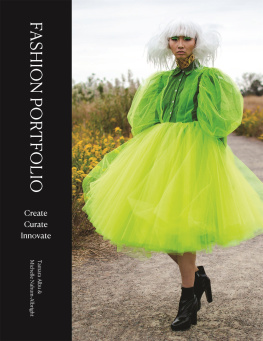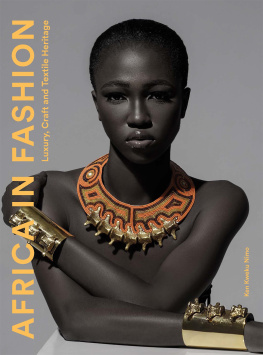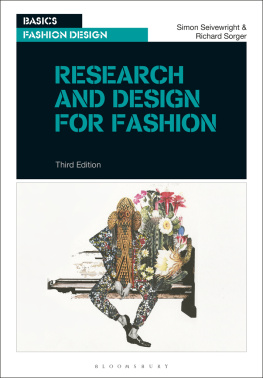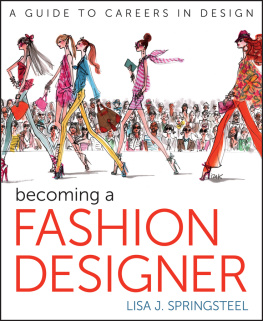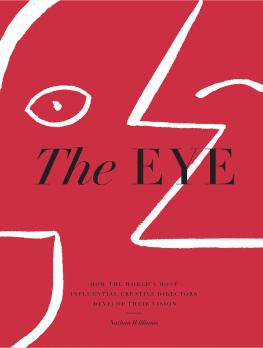
BLOOMSBURY VISUAL ARTS
Bloomsbury Publishing Plc
50 Bedford Square, London, WC1B 3DP, UK
1385 Broadway, New York, NY 10018, USA
29 Earlsfort Terrace, Dublin 2, Ireland
This electronic edition published in 2021 by Bloomsbury Publishing Plc
BLOOMSBURY, BLOOMSBURY VISUAL ARTS and the Diana logo are trademarks of Bloomsbury Publishing Plc
First published in Great Britain by AVA Publishing SA 2011
This edition published by Bloomsbury Visual Arts 2022
Copyright Jacqueline McAssey and Sophie Benson, 2022
Jacqueline McAssey and Sophie Benson have asserted their rights under the Copyright, Designs and Patents Act, 1988, to be identified as Authors of this work.
Cover image: Fashion Week Spring/Summer 2020, Madrid, Spain. ( Pablo Cuadra/Getty Images)
All rights reserved
You may not copy, distribute, transmit, reproduce or otherwise make available this publication (or any part of it) in any form, or by any means (including without limitation electronic, digital, optical, mechanical, photocopying, printing, recording or otherwise), without the prior written permission of the publisher. Any person who does any unauthorised act in relation to this publication may be liable to criminal prosecution and civil claims for damages.
Bloomsbury Publishing Plc does not have any control over, or responsibility for, any third-party websites referred to or in this book. All internet addresses given in this book were correct at the time of going to press. The author and publisher regret any inconvenience caused if addresses have changed or sites have ceased to exist, but can accept no responsibility for any such changes.
A catalogue record for this book is available from the British Library.
A catalog record for this book is available from the Library of Congress.
ISBN: 978-1-3500-7410-1 (PB)
ISBN: 978-1-3502-4184-8 (eBook)
ISBN: 978-1-3500-7411-8 (ePDF)
To find out more about our authors and their books please visit www.bloomsbury.com where you will find extracts, author interviews and details of forthcoming events, and to be the first to hear about latest releases and special offers, sign up for our newsletters.

Figure 0.1Menswear editorial showcasing clothes by designer Bruce Asbestos. Photographer: Lucie Armstrong. Styling: Helen McGuckin.
Contents







Figure 1.1Fashion editorial for CR Fashion Book. Photography: Andrew Vowles. Styling: Ben Perreira.
Put simply, a fashion stylist is responsible for choosing the look and clothing, and often much more, to communicate a fashion idea, trend or theme, or to advertise a fashion product. This book has been written for those who are interested in the process of fashion image-making and what the job entails. It will inform you about how and why the stylist has become an integral part of fashion image-making in publications, both online and in print, advertising campaigns and more recently as a consultant to fashion designers and brands.
You will also learn what it means, for example, to style for e-commerce, a still-life image or a fashion show and what types of skills these different fields require. Personal styling is explained in its various guises, from one-to-one styling in retail outlets to the styling of musicians and celebrities. Additionally, it will describe the day-to-day life of a stylist, which should help you to identify if this is the right career choice for you.
This book contains visual examples of inspirational styling, created not only by professionals but also undergraduates; proving that even on a limited budget, with imagination and drive, it is still possible to create beautiful and relevant work.

Figure 1.2Muted menswear is shot against a dramatic landscape in this fashion editorial for V Man. Photography: Will Davidson. Styling: Mattias Karlsson.
What is fashion styling?
Essentially, styling is a way of assembling clothing and accessories, to exhibit them in their most desirable or attractive way in order to sell them. This could include, for example, choosing accessories (belt, shoes and jewellery) to coordinate with and complement a dress. Fashion clothing can be styled alone or as a group of products (showing a range of colours), with or without a model. The styling process involves selecting and experimenting with many alternative garments to establish the perfect composition.
I wanted to mix designer things with found things, and used to go to places like John Lewis schoolboys department to get a very eclectic mix.
Melanie Ward
The origins of styling
The first stylists were fashion editors who worked exclusively for fashion magazines. Editors did in fact edit the clothing and fashion pages, and they chose the designers to be featured in the magazine. Under the initial direction of the fashion editor the relationship that really mattered during the shoot was that of the photographer and model. Indeed, during the 1960s it was common for models to do their own make-up and hair and bring their own accessories to a shoot, forgoing the need for a third person. Then, during the 1980s the first freelance stylists appeared, working for new style magazines such as The Face and i-D. As these magazines did not have permanent fashion staff, freelance stylists could apply their inventive fashion ideas across a number of publications and clients. The stylist became an integral part of fashion editorial; a key contributor to the image-making process, who wasnt tied to one magazine or one point of view.
Ray Petri (19481989)
Ray Petri, thought by many to be the first stylist, was known in the 1980s for his Buffalo style; a ground-breaking mix of urban uniform, ethnic dress, sportswear and high-end fashion. His use of real people instead of models (including Black and mixed-race men) in fashion shoots was, at the time, new and exciting. Petri contributed to The Face magazine and worked with designers Jean Paul Gaultier and Giorgio Armani. The creative collective he was part of was also named Buffalo and in the book of the same name, GQ editor Dylan Jones stated that even twenty years after Petris death, Harder than the rest; in the age of the stylist, Ray Petri is still king.




